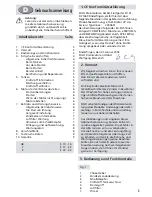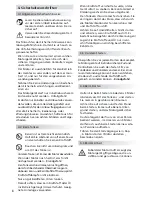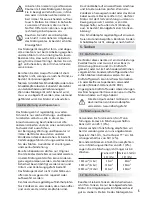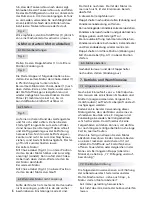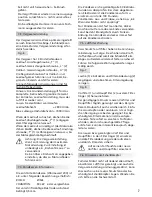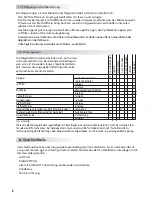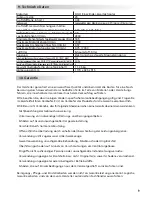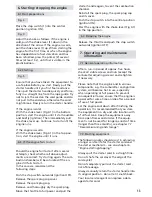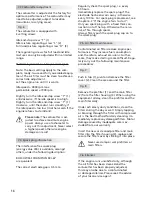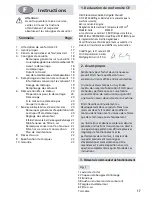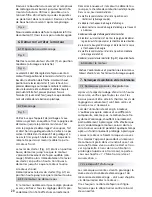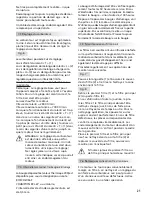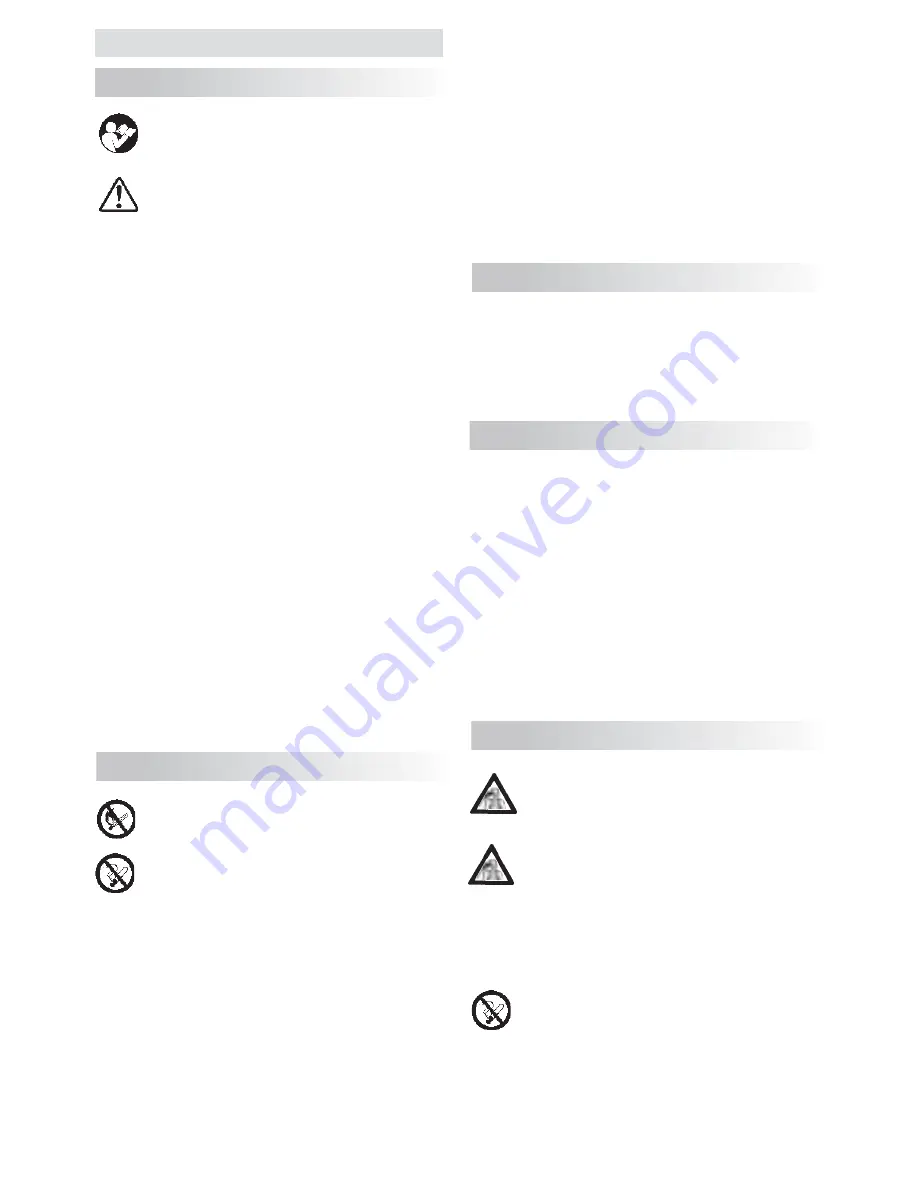
11
4. Safety regulations
4.1 General safety informations
Before initial use, carefully read these
operating instructions and keep them
in a safe place.
Ignoring safety information can result in
loss of life. Also observe the accident pre-
vention requirements of your professional
body or the Health and Safety at Work Act.
If this is the first time you have used this
kind of motorised device, ask your dealer
to show and explain to you the safe han-
dling of this equipment.
Use this engine exclusively for the opera-
tion of the equipment on which it is in-
stalled and for the purpose for which is
designed.
Never modify existing safety equipment or
controls.
Only use this motorised equipment when
it is in a safe condition - risk of accidents.
Only use accessories and auxiliary equip-
ment which is supplied by the manufac-
turer and which is explicitly approved for
such use.
Individuals who ignore the safety, operating
and maintenance instructions are liable for any
resulting damage and consequential losses.
4.2 When filling the fuel tank
Petrol is extremely flammable. Keep away
from open flames and never spill fuel.
Never smoke at the workplace or
where you fill the fuel tank.
Always switch off the engine, prior to filling
the fuel tank.
Never fill the fuel tank whilst the engine is
still hot - risk of fire.
Always open the filler cap carefully, to allow
pressure to reduce gradually and to prevent
fuel spillages.
Never breathe in fuel vapours.
Only fill the fuel tank in locations which are
adequately ventilated.
Ensure that no fuel or oil penetrates the
ground (environmental protection). Use a
suitable base.
Clean the equipment immediately, if fuel has
been spilled. Immediately change contami-
nated clothing.
Always tighten the filler cap. This reduces the
risk of the filler cap working itself loose
through engine vibrations and fuel spilling out.
Check for leaks. Never start the engine or
operate the equipment if fuel is spilling out.
Risk to life from burns.
Store fuel and oil only in approved and prop-
erly labelled containers.
4.3 Before starting
Check the complete motorised equipment is in
full working order. Also check the ignition
cable and spark plug cap for perfect fit. Loose
connections can cause sparks which can ignite
any expelled fuel-air mixture -
risk of fire!
4.4 During start-up
Start the engine at least 3 m from the location
where you fill the tank; never start the engine
in enclosed spaces.
During start-up, ensure that the equipment is
postioned securely and firmly. Always start the
equipment on a level base, in order to be able
to securely hold the machine.
This motorised equipment must only be oper-
ated by one person - keep all others at a dis-
tance of at least 5 m, even during starting.
Start the equipment as described in chapter 6.
“Starting/stopping the engine”.
4.5 During operation
As soon as the engine is running, it
produces poisonous exhaust fumes
which may be invisible and odourless.
Never operate the motorised equip-
ment in enclosed spaces. Always en-
sure adequate ventilation when work-
ing in confined circumstances, in dips
and in ditches. Always stay within
earshot of other people who may help
in emergencies. Take regular breaks.
Never smoke within the working area
or within the vicinity of the motorised
equipment. High risk of fire.
When using the motorised equipment try to
produce as little noise and exhaust fumes as
possible - only accelerate whilst working and
never run the engine unnecessarily. Please
note that noise can cause environmental pol-
lution. Where applicable, observe designated
Proceed particularly carefully when
handling this motorised device.



